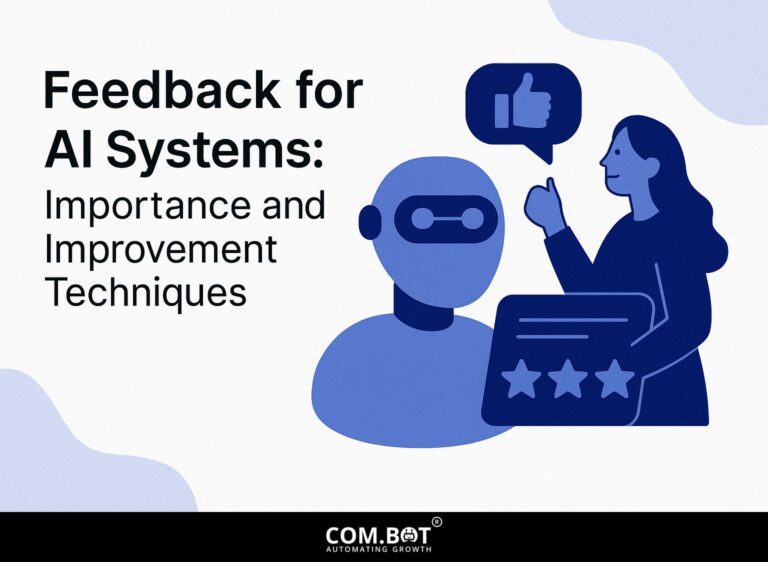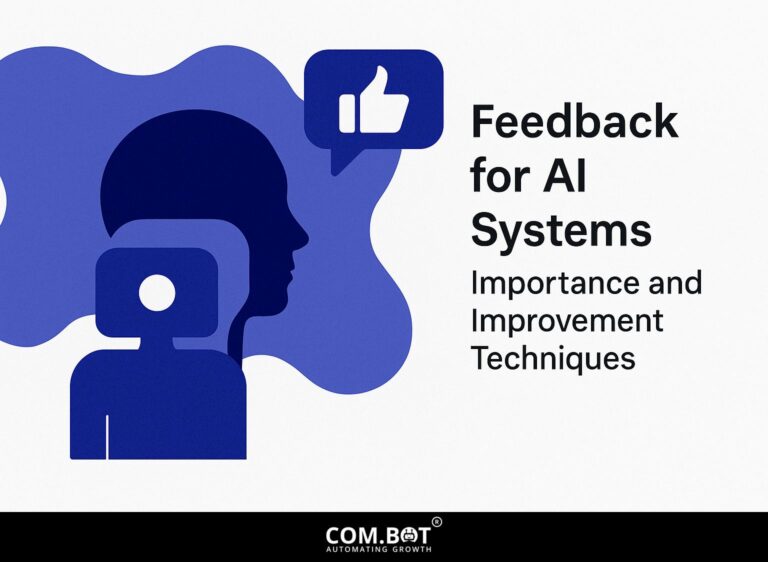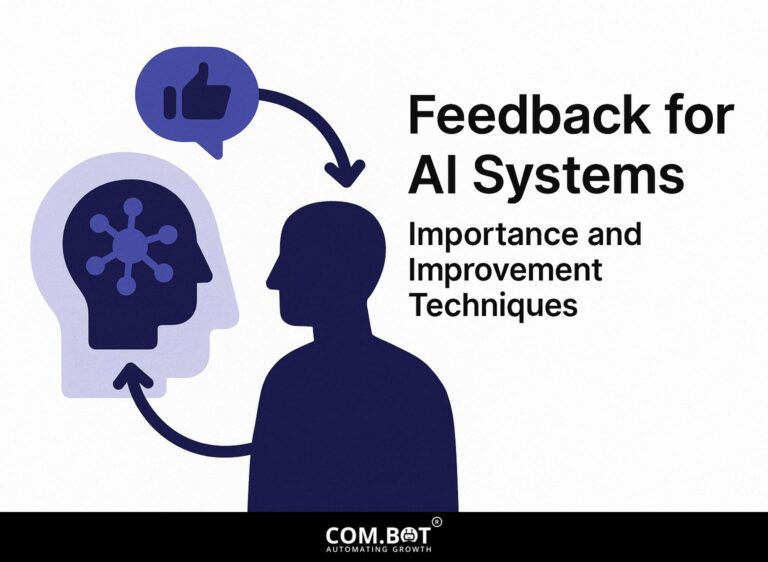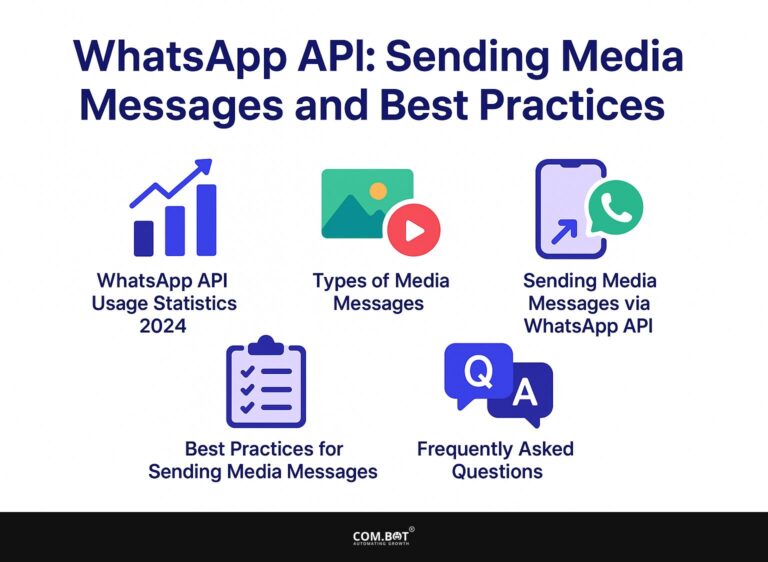Feedback for AI Systems: Importance and Improvement Techniques
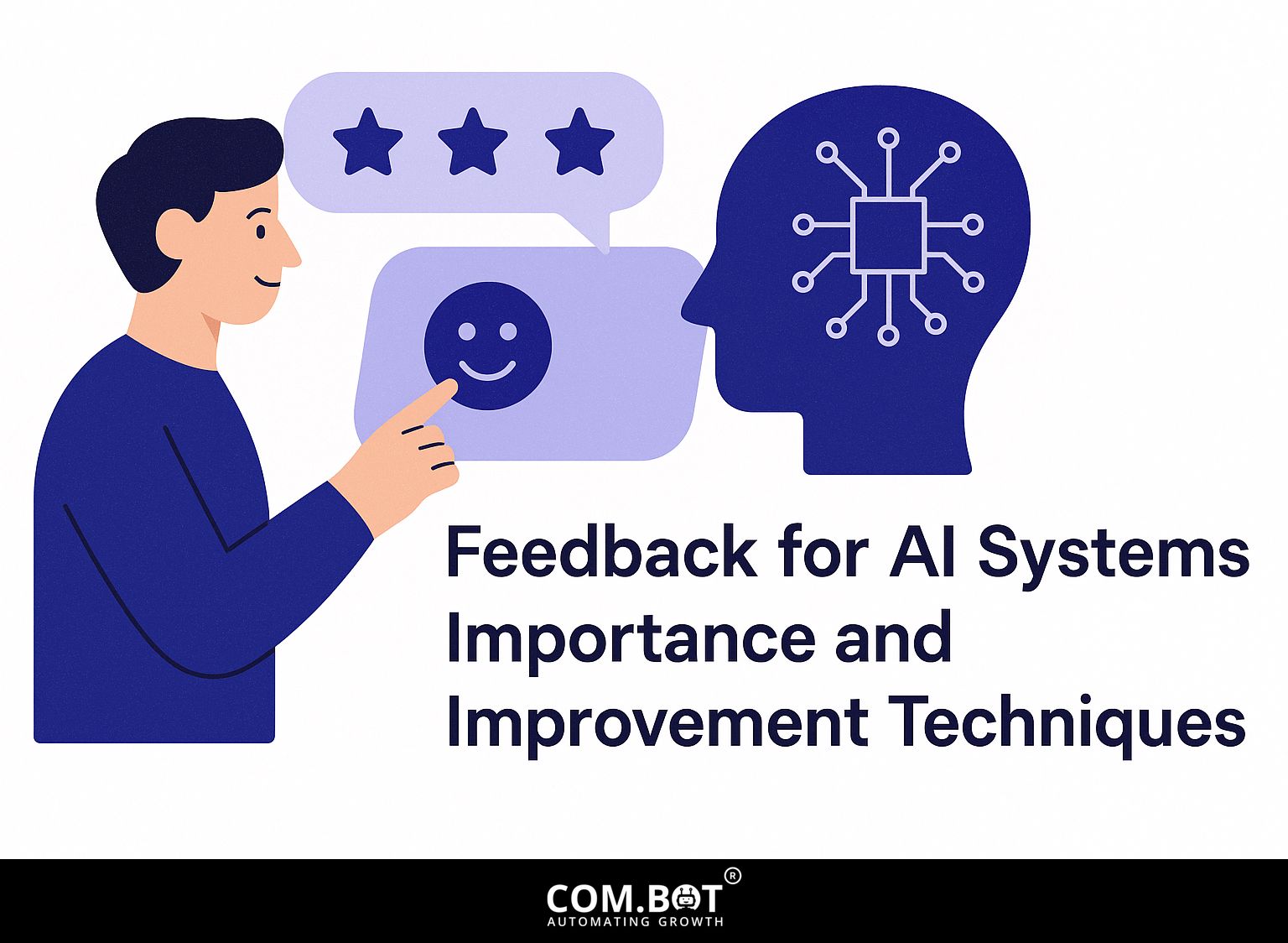
As Artificial Intelligence develops quickly, knowing how human feedback influences AI systems is important for their success. Using methods like reinforcement learning and machine learning, tools like Label Studio can greatly improve how feedback systems work. This article looks into why feedback is important for AI systems, discussing ways to improve accuracy, build user trust, and address common problems in collecting information.
Key Takeaways:
- 1 Types of Feedback Mechanisms
- 2 Benefits of Effective Feedback
- 3 AI Feedback Effectiveness
- 4 Challenges in Gathering Feedback
- 5 Techniques for Implementing Feedback Loops
- 6 Case Studies and Applications
- 7 Future Directions in AI Feedback
- 8 Frequently Asked Questions
- 8.1 What is the importance of feedback for AI systems?
- 8.2 How does feedback help improve AI systems?
- 8.3 What are some techniques for providing feedback to AI systems?
- 8.4 Why is it necessary to guarantee good feedback for AI systems?
- 8.5 Can feedback be used to address ethical concerns in AI systems?
- 8.6 How can businesses and organizations benefit from implementing feedback mechanisms in their AI systems?
Definition and Scope
AI feedback is the organized information AI systems get from users, helping them learn and change as time goes on.
This feedback is critical in improving AI performance, particularly through human input and data annotation.
For instance, using tools like Label Studio, teams can gather detailed annotations that inform model training.
In a real-world example, data from how users interact can improve a chatbot’s replies, helping it grasp the situation and purpose more effectively.
Regular feedback meetings change the model’s settings, leading to more accurate results.
Setting up a feedback cycle makes the process easier, improving how AI systems respond to real-world usage.
Importance of Feedback in AI Systems
Feedback plays an important role in AI systems because it helps make ongoing updates and changes to algorithms, keeping models correct as time passes.
In healthcare, for example, AI systems analyze patient data and treatment outcomes. Immediate input from healthcare experts helps these systems improve their predictions.
If an AI model wrongly recognizes a patient’s condition, promptly fixing the data helps the algorithms make better choices later.
Tools like TensorFlow or PyTorch help developers easily set up systems that take advantage of feedback loops. By using continuous monitoring systems, healthcare AI can change as needed, leading to improved patient results and better use of resources.
Types of Feedback Mechanisms
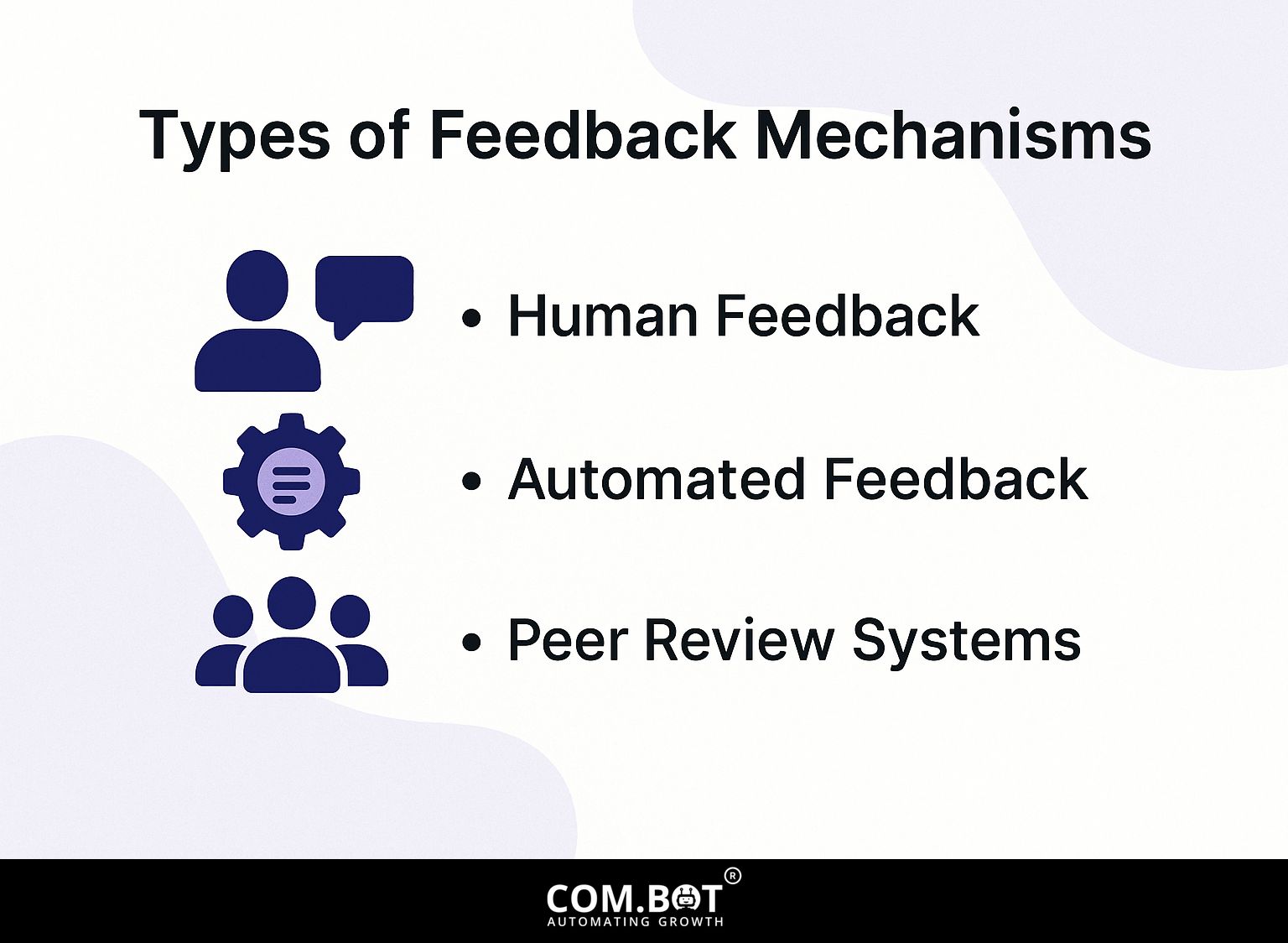
AI systems use different ways to improve their results, such as feedback from people, machine processes, and reviews from others in the field. For those interested in exploring these techniques further, you might find our detailed guide on feedback for AI systems particularly enlightening.
Human Feedback
Human feedback involves direct input from users, which is essential for error correction and enhancing the overall AI user experience.
Incorporating feedback into AI systems can be achieved through platforms like SurveyMonkey or Typeform, where users can express their experiences.
For instance, a customer support AI can use feedback data to identify frequent issues, allowing developers to adjust algorithms accordingly.
Implementing feedback loops in your AI model can involve periodic assessments:
- Collect user ratings on responses,
- Analyze trends, and
- Repeatedly improve the AI’s training data using this information.
This process improves performance and builds user confidence.
Automated Feedback
Automated feedback systems use algorithms to provide information automatically, making the learning process faster.
For example, in predictive analytics, models can constantly change using real-time performance data.
Consider a retail AI that analyzes customer purchasing behaviors. If new patterns appear, the system changes its suggestions to improve sales.
Tools like Amazon SageMaker handle this feedback process, allowing data scientists to quickly improve their models. Similarly, Google Analytics uses user interaction data to inform website changes, enhancing user experience and conversion rates.
Using feedback improves AI’s performance and keeps it useful in different situations.
Peer Review Systems
Peer review systems use collaborative feedback from many experts to make sure AI models are strong and trustworthy.
These systems encourage teamwork across different fields, bringing together experts in linguistics, computer science, and psychology to share their knowledge.
For example, a recent study involved a team examining an AI language model, which resulted in clearer context and reduced bias.
Tools like GitHub facilitate transparent feedback, enabling real-time discussions and revisions. Successful projects often use structured feedback forms and regular review meetings, creating a culture of constant improvement.
By including different viewpoints, AI systems can improve their functioning and usefulness in many areas.
Benefits of Effective Feedback
Using good feedback methods leads to better accuracy and more user trust in AI systems. For detailed strategies on enhancing these techniques, you might find it beneficial to explore effective feedback improvement techniques for AI systems.
AI Feedback Effectiveness
AI Feedback Effectiveness
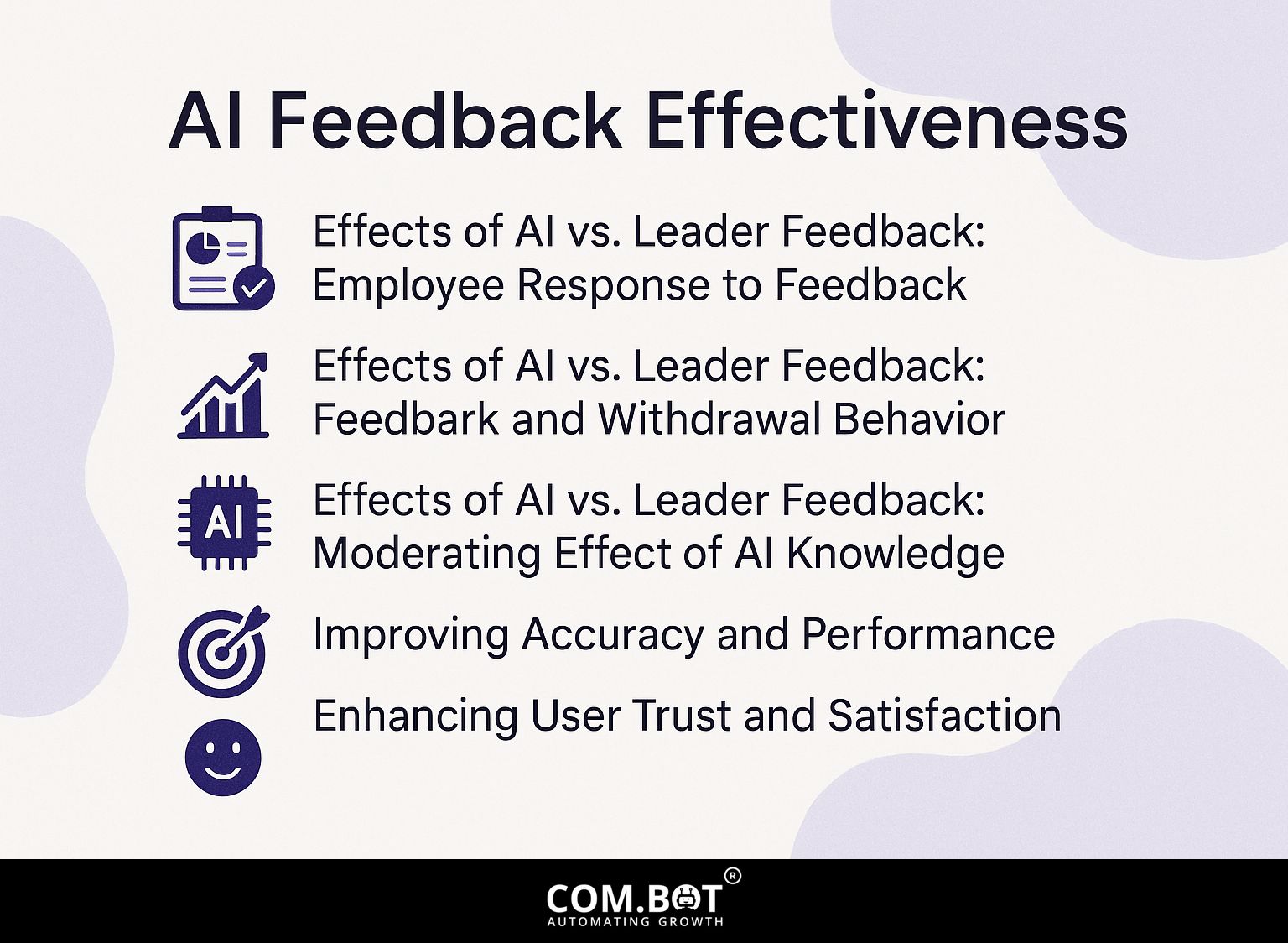
Effects of AI vs. Leader Feedback: Employee Response to Feedback
Effects of AI vs. Leader Feedback: Feedback and Withdrawal Behavior
Effects of AI vs. Leader Feedback: Moderating Effect of AI Knowledge
The AI Feedback Effectiveness data evaluates the impact of feedback from AI systems compared to traditional leaders on employee behavior, particularly focusing on self-efficacy, shame, and withdrawal tendencies. This study explains how AI feedback can affect workplace interactions and stresses the need for employees to understand AI.
Effects of AI vs. Leader Feedback indicates that AI negative feedback affects self-efficacy leader negative feedback induces higher shame
- Feedback and Withdrawal Behavior: AI-related shame leads to minimal withdrawal behavior AI-related self-efficacy concerns show a higher withdrawal rate
Moderating Effect of AI Knowledge reveals that high AI knowledge reduces self-efficacy impact low AI knowledge increases shame
This data explains why knowing about AI is important at work. Training employees to understand AI systems could lessen adverse reactions to AI feedback, enhancing self-efficacy and reducing withdrawal behavior and shame. As AI becomes more common, training employees to understand AI feedback will be key to keeping them motivated and productive.
Improving Accuracy and Performance
Getting input from users can improve AI performance, with studies showing it can increase results by 25%.
Creating good feedback systems means regularly gathering user comments, examining the information, and repeatedly improving your AI model.
For example, tools like Amazon SageMaker allow developers to integrate datasets that reflect user interactions, thereby feeding this data back into the model. By conducting A/B testing, you can clearly measure progress and find out which changes lead to better outcomes.
Organizations that regularly interact with users have seen improvements of up to 30%, showing how important real-time data is for ongoing development.
Enhancing User Trust and Satisfaction
Having good feedback systems builds user trust and increases customer satisfaction by about 30% in AI services.
Companies like Zappos exemplify this principle, actively soliciting customer feedback through follow-up emails and post-interaction surveys. By analyzing this input, they tailor their support strategies, leading to higher retention rates.
Another example is Airbnb, which uses feedback from hosts and guests to make their services better and make safety measures stronger, directly addressing what users are worried about.
Using tools like Typeform or SurveyMonkey can simplify collecting feedback. These tools encourage users to express their thoughts and demonstrate that their opinions are valued, which enhances customer satisfaction.
Challenges in Gathering Feedback
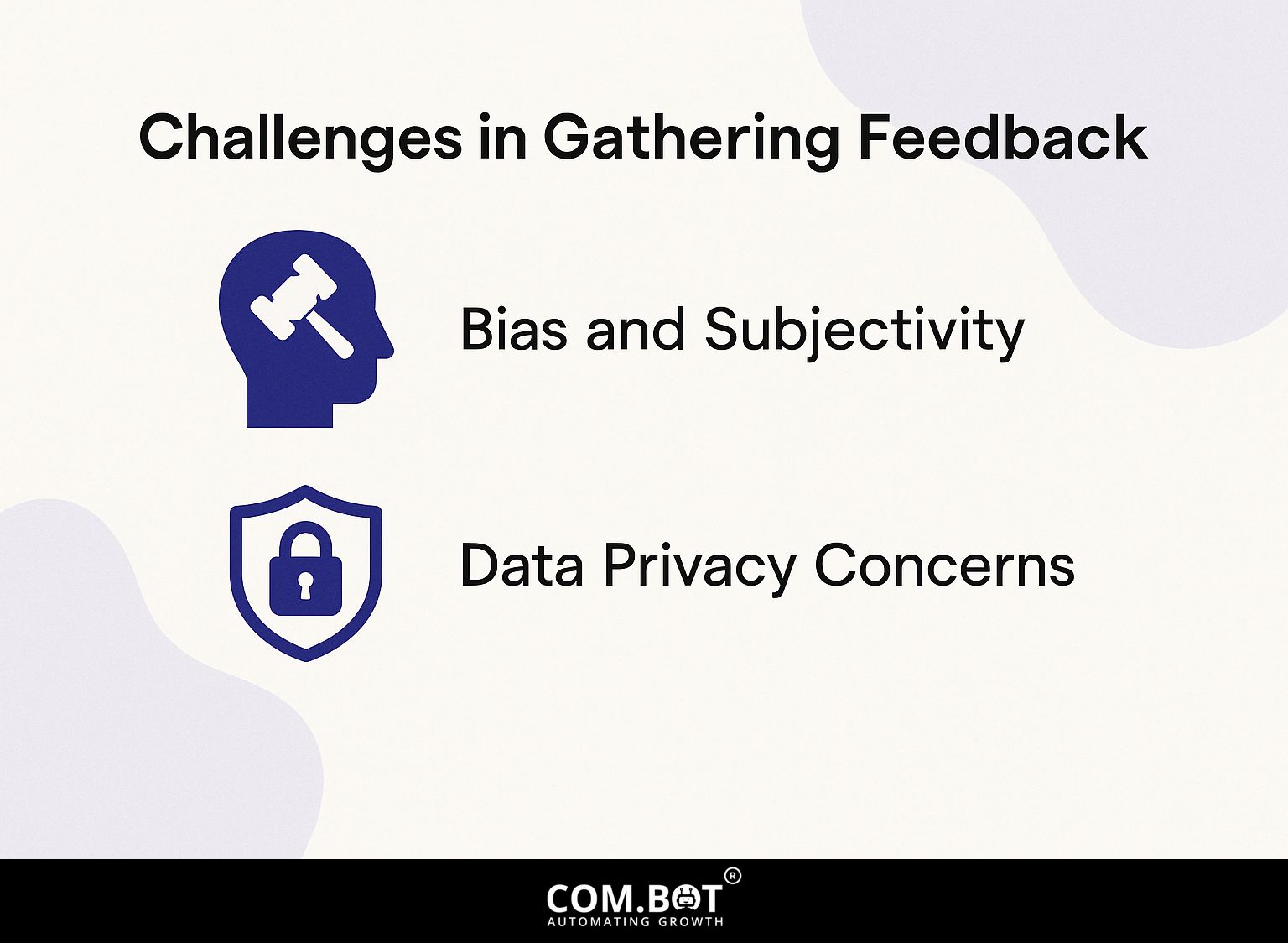
Gathering feedback is important, but it can be hard because of biases and data privacy problems that can limit AI’s success. For a deeper understanding of how AI applications can navigate these challenges, our analysis of WhatsApp chatbots in healthcare provides crucial insights into overcoming data privacy concerns.
Bias and Subjectivity
Cognitive biases can distort feedback, leading to skewed information that influences model performance and affects decision-making.
To mitigate these effects, implement randomized sampling of user input by rotating the participants involved in feedback sessions.
Gather information from various data sources and receive opinions from diverse groups to achieve a more rounded view.
Employing tools like Google Forms for surveys can simplify data collection, while software like Qualtrics offers advanced analysis options.
Regularly check feedback methods to find and fix common biases, supporting ongoing betterment in feedback quality.
Data Privacy Concerns
Data privacy concerns can restrict the ability to collect meaningful feedback, necessitating careful management of user interactions.
To ethically collect feedback while ensuring user privacy, adhere to regulations such as GDPR. Begin by informing users about how their data will be used, either through an explicit consent form or a privacy policy readily accessible on your site.
Tools like OneTrust help in handling compliance and user consent. Using methods like anonymous surveys helps you collect information without risking user privacy.
Always make sure to collect feedback in a way that respects user choices and is open about the process.
Techniques for Implementing Feedback Loops
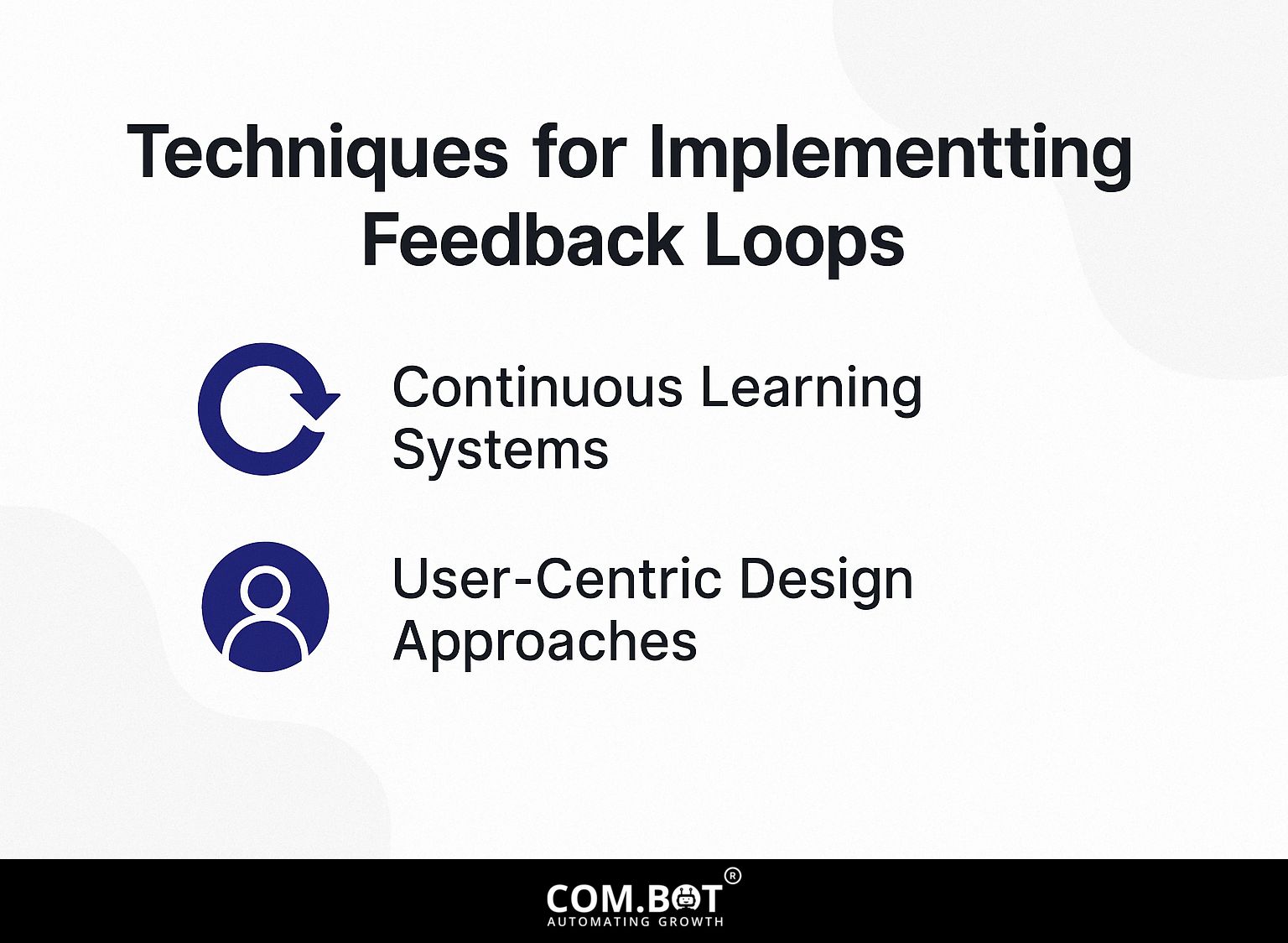
Using effective feedback loops involves different methods that support ongoing learning and user-focused design in AI systems. This approach aligns with the principles outlined in our analysis of feedback improvement techniques for AI systems.
Continuous Learning Systems
Continuous learning systems change over time by using feedback instantly, which helps improve their performance regularly.
For example, self-driving cars use ongoing learning by studying how drivers act and how their surroundings change. Companies such as Waymo collect a lot of information and use machine learning techniques to make their navigation systems work better.
As drivers interact with the vehicle, it adjusts its algorithms to improve safety measures and efficiency. Recommendation systems on platforms like Netflix observe what users watch and suggest new shows or movies based on past viewing habits.
This repeated process helps create systems that respond to user interactions, ensuring they remain useful and practical.
User-Centric Design Approaches
Using user-focused design helps make sure feedback systems match what users need, resulting in improved AI results.
Incorporating user-centric design involves active participation from end-users throughout the development process. Start by talking to users to learn about their experiences and difficulties with current systems.
For instance, using tools like Hotjar can help track user behavior, revealing pain points in real-time. Make sample versions and test them with users to check that the designs are easy to use.
Adjusting the design based on user feedback makes it better and makes users feel included, which helps the AI system perform better.
Case Studies and Applications
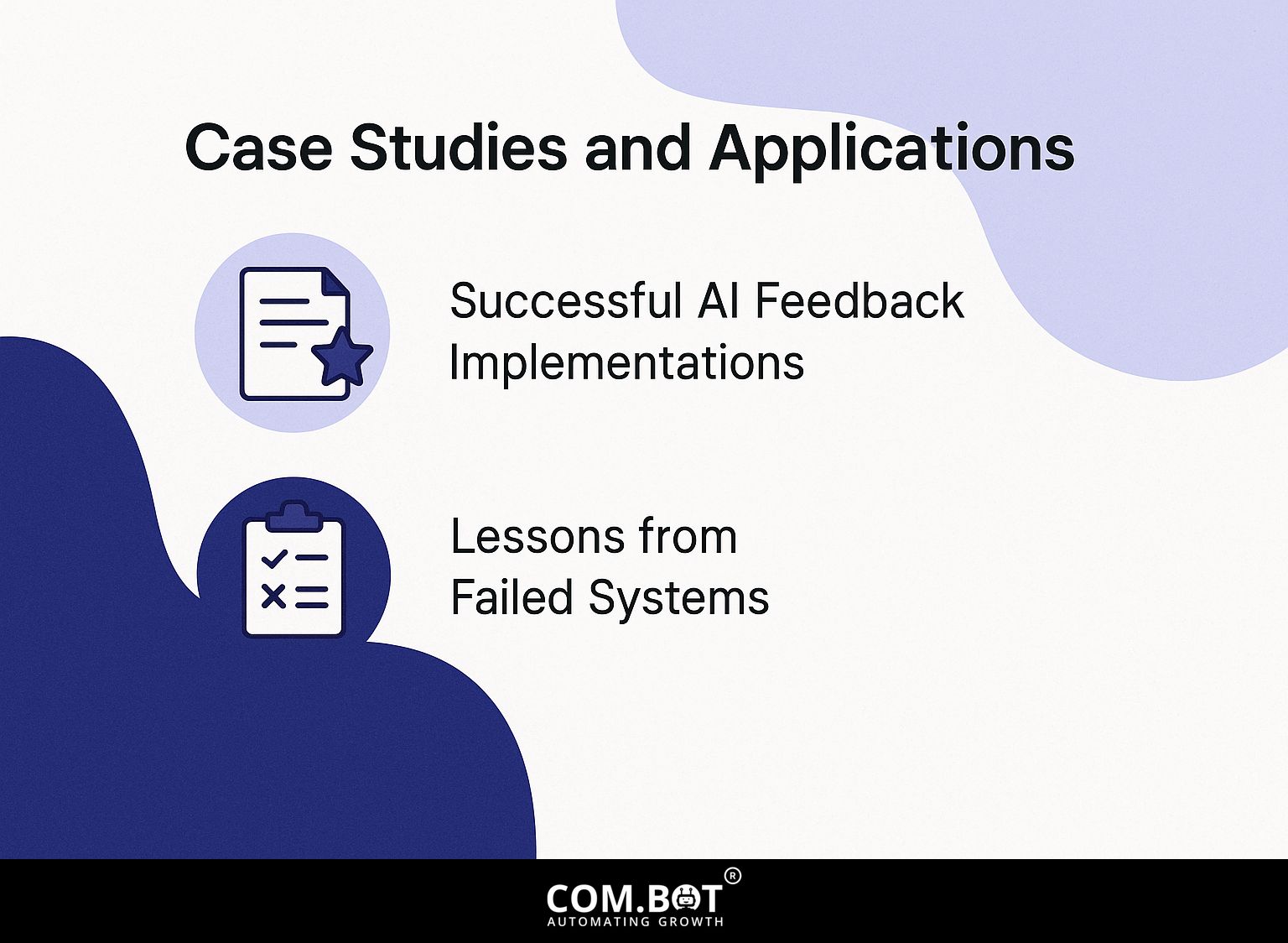
Looking at case studies shows useful information about how feedback systems work well in different AI uses.
Successful AI Feedback Implementations
Examples of successful use of AI feedback systems, like OpenAI’s models, show how user feedback greatly improves system performance.
For instance, a financial services company integrated user feedback into their AI chatbot, which resulted in a 30% increase in customer satisfaction scores.
They used tools like UserVoice to gather feedback and Tableau to study data trends. By regularly updating the AI model based on user suggestions, they reduced response times by 50%.
Key lessons learned include prioritizing feedback loops and maintaining transparent communication with users about changes.
These strategies improve AI performance and build user trust and engagement.
Lessons from Failed Systems
By looking at AI systems that didn’t work out, we learn important lessons about needing solid feedback systems and careful human oversight.
For instance, early facial recognition systems often misidentified individuals due to inadequate real-world training data and poor feedback loops. In the case of Microsoft’s Tay chatbot, the lack of proper moderation led to offensive language.
To avoid similar failures, implement multi-layered feedback strategies:
- Engage human reviewers to assess AI outputs regularly.
- Use adversarial training methods to present models with difficult situations.
- Keep updating datasets to match current situations, so your model learns well and adjusts to changes.
Future Directions in AI Feedback
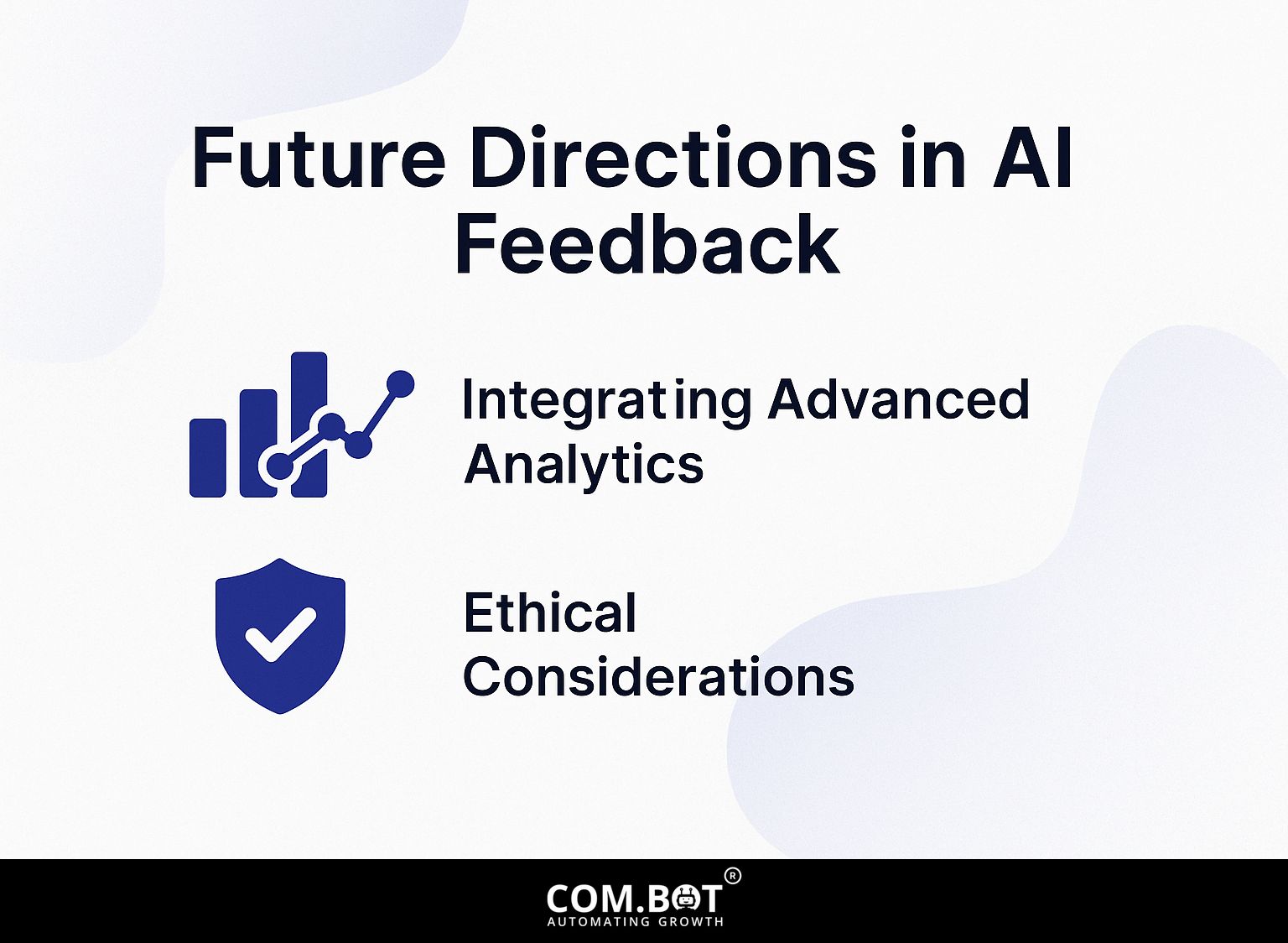
AI feedback is expected to improve, with better data analysis and attention to ethics guiding new intelligent systems. Related insight: Feedback for AI Systems: Importance and Improvement Techniques explores innovative methods to enhance feedback mechanisms.
Integrating Advanced Analytics
Using advanced analytics in AI feedback systems can greatly improve performance measurements and keep users interested.
By employing tools like Google Analytics 4, Tableau, or Mixpanel, organizations can gather real-time data that reveals user behavior patterns and preferences.
For example, Google Analytics 4 shows how users interact at different stages, helping businesses adjust their plans based on this information.
Tableau can visualize complex data sets, highlighting areas for improvement and growth opportunities.
Regularly analyzing this data enables companies to make informed decisions, resulting in a more responsive and engaging user experience.
Ethical Considerations
Ethical issues in AI feedback systems are very important. It is essential to focus on protecting data privacy and giving users control during development.
To maintain ethical standards, developers should clearly explain how they collect and use user feedback. For instance, maintaining an easily accessible privacy policy can help users understand their rights.
Including different people like users, ethicists, and legal experts in the feedback process makes sure various viewpoints are taken into account. Regular reviews of AI systems help maintain accountability, allowing for adjustments based on real-world outcomes.
Tools like Fairness Flow or AI Fairness 360 can help evaluate biases and improve practices to match ethical standards.
Frequently Asked Questions
What is the importance of feedback for AI systems?
Feedback is important for AI systems because it helps them keep learning and getting better at what they do. If AI systems don’t receive feedback, they wouldn’t be able to learn from new situations or make correct choices.
How does feedback help improve AI systems?
Feedback gives AI systems important information about how they are doing, helping them find and fix any mistakes or biases. This results in better accuracy and more dependable decision making.
What are some techniques for providing feedback to AI systems?
There are various techniques for providing feedback to AI systems, including manual labeling, reinforcement learning, and active learning. Each technique has its own advantages and is suitable for different types of AI systems.
Why is it necessary to guarantee good feedback for AI systems?
The quality of feedback directly impacts the performance of AI systems. Bad feedback can cause wrong decisions and stop the system from getting better. Therefore, it is essential to make sure the feedback given to AI systems is correct and useful.
Can feedback be used to address ethical concerns in AI systems?
Yes, feedback can help tackle ethical issues in AI systems by finding and fixing biases or unfair patterns in their decisions. This can lead to more equitable and fair outcomes for all individuals affected by the AI system.
How can businesses and organizations benefit from implementing feedback mechanisms in their AI systems?
By using feedback systems, businesses and organizations can make their AI systems more accurate and perform better, which helps in making better decisions and becoming more efficient. This can also result in cost savings and improved customer satisfaction.


